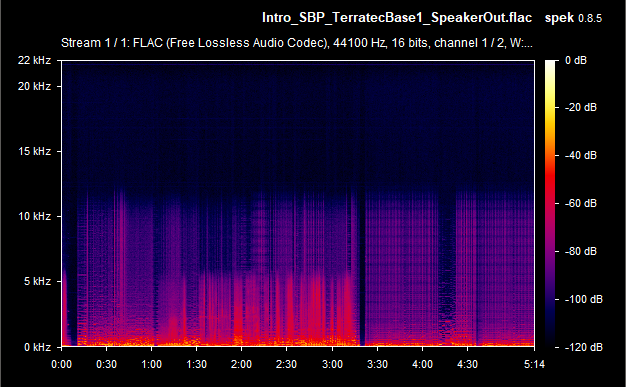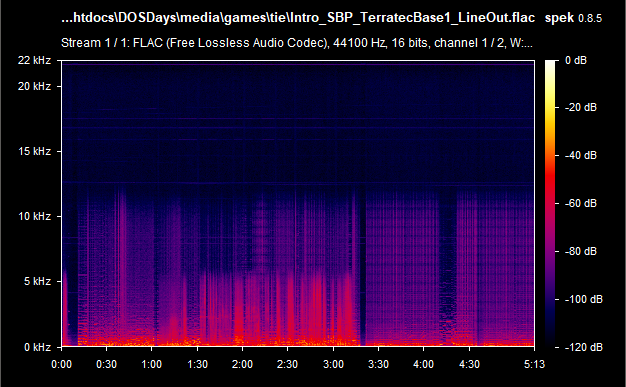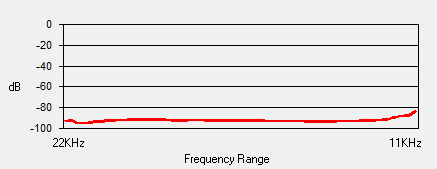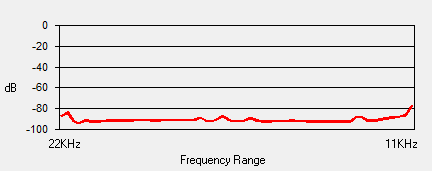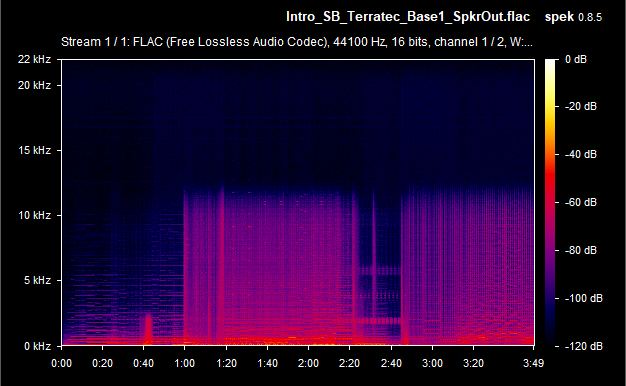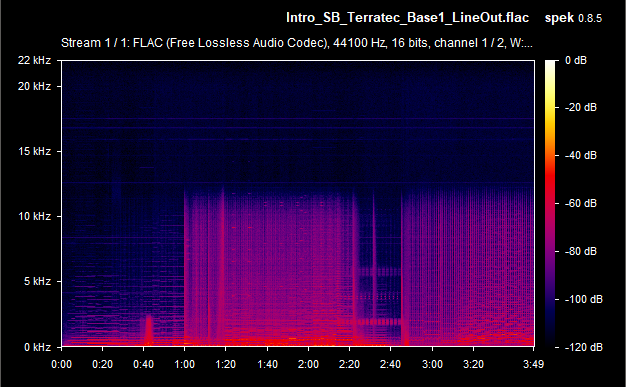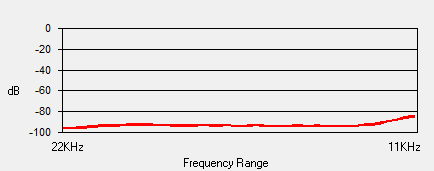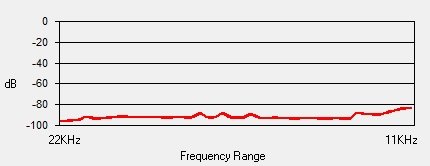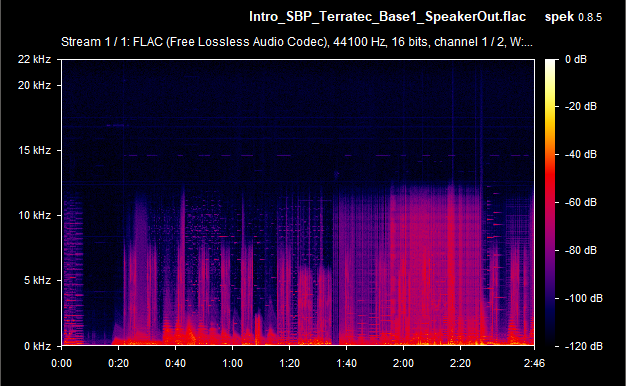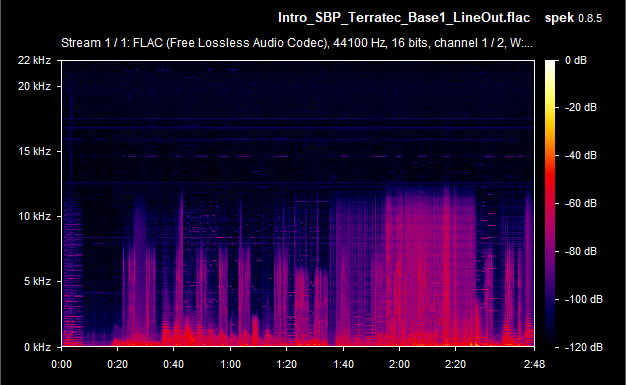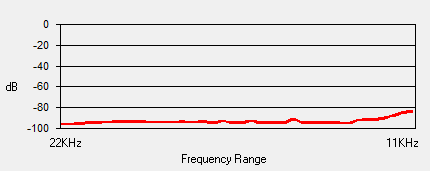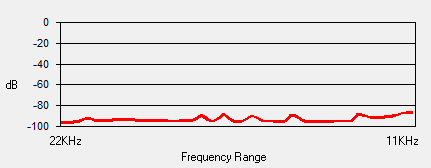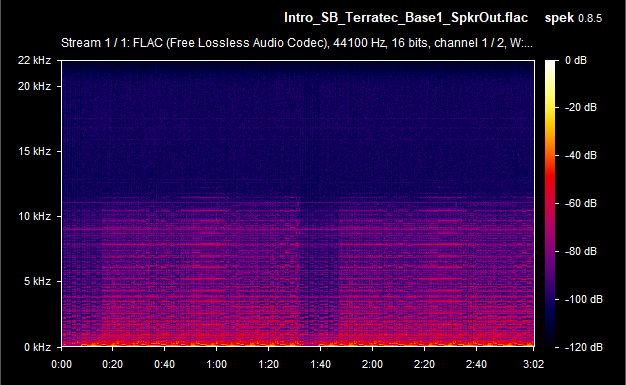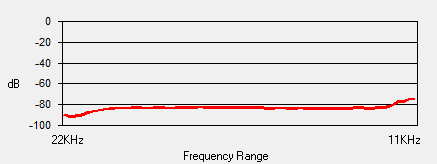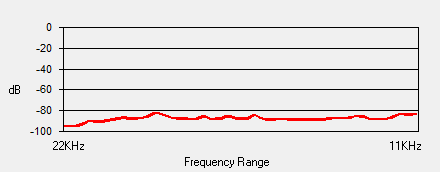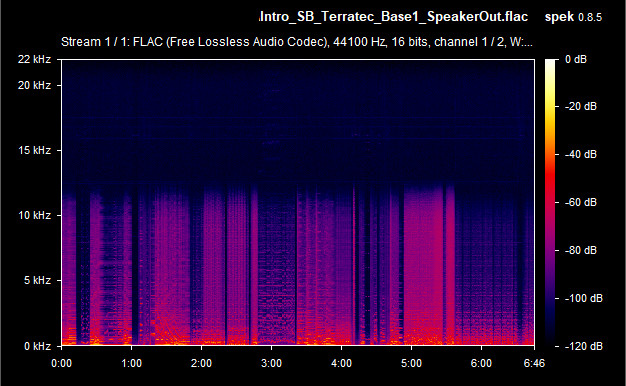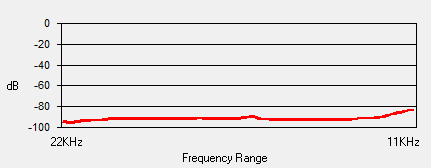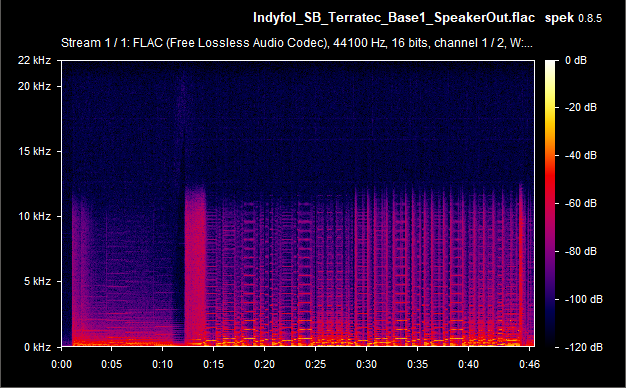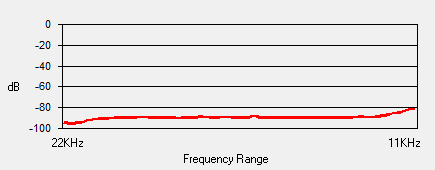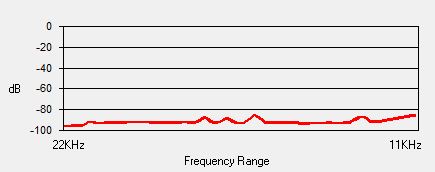Retro Review: Terratec Promedia Base 1 - Part 3
18th June 2024
In Part 2, I installed the DOS drivers for the Terratec Base 1 card.
In this final Part 3, I will run some tests in Sound Blaster Pro mode (if available as an option) or Sound Blaster mode (if not). It's possible that configuring some games for Sound Blaster Pro (stereo) actually just run standard Sound Blaster (mono) audio.
I created recordings in both .FLAC format, with is lossless, and in .OGG. I used the same signal-to-noise plug-in for Audacity that I've used in the past few sound card retro reviews - this uses the ISO-226 curve for signal and ITU-R 468 curve for noise, the results of which are shown here:
3D Surround Sound
So far I had muted the 3D surround feature in the mixer. With it enabled and set to the maximum level of 8 , I could not discern any change in the audio output from my two connected powered speakers (Creative SBS35 by Cambridge SoundWorks).
Wavetable Header
I also tested the card's wavetable header with my Serdaco X2GS daughterboard, with a number of games - no hanging note bug, nor reverse stereo problems were seen. The wavetable header is positioned side-on, which makes sense for a card that is fairly short in height, but its orientation means the daughterboard would be hanging off the back of the card - something to bear in mind if you don't have space directly behind the card slot. Also, if you have one of these modern GM daughterboards, you cannot easily provide it with USB power given that the cables must be connected going down toward the motherboard - tricky if you have cables with large thick connector blocks.
The audio from the wavetable was perfect (as expected).
Conclusion
Sadly things are pretty awful here. The Analog Devices AD1816 chip has a very poor representation of the Yamaha OPL3 chip, with very little bass, an overall flat and basic sound, and some notes just sounding 'off' compared to the YMF262 original - it's so bad to be noticeable in almost every game. The quality of the output isn't great either, though no worse than many other Sound Blaster Pro-compatible cards.
I didn't see any reverse stereo problems like you have with the Creative Sound Blaster Pro.
In comparison of the speaker-out RMS and Signal-to-Noise Ratio (SnR) on its SB/SBP audio output with other cards, we can see that in these tests it came in third. What is really poor is the Line-Out SnR of 60.8 - the Audiowave 16 above it got a Line-Out average SnR of 77.
| Card | Average RMS (dB) | Average SnR (dB) |
|---|---|---|
| Yamaha Audician 32 | -15.19 | -69.75 |
| MultiWave Audiowave 16 AISP | -12.77 | -65.33 |
| Terratec Promedia Base 1 | -16.37 | -65.17 |
| Sound Blaster AWE64 Value | -22.12 | -64.66 |
| Sound Blaster Pro 2 (CT1600) | -16.78 | -63.75 |
| Sound Blaster 16 (CT2770) | -16.72 | -58.75 |
| Ad Lib MSC16 | -18.81 | -57.5 |
| Aztech Sound Galaxy Nova 16 | -16.05 | -57.25 |
| Sound Blaster 16 (CT2940) | -28.25 | -52.33 |
| ESS Audiodrive ES1868 | -23.87 | -49.5 |
Despite the card being easy to set up and initialise, and that it was detected by all software I threw at it, its poor OPL3 representation really lets it down, especially when there's so much other choice.
I hope you enjoyed reading this article. If you have one of these cards, let me know what you think!


